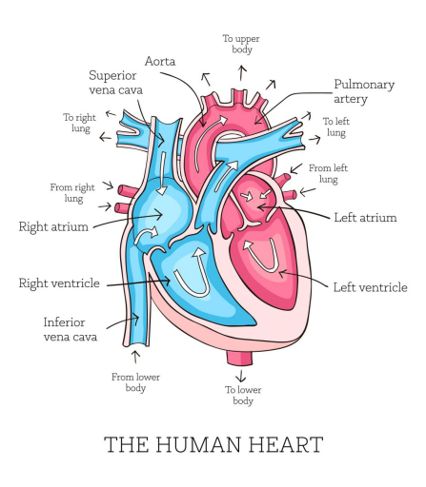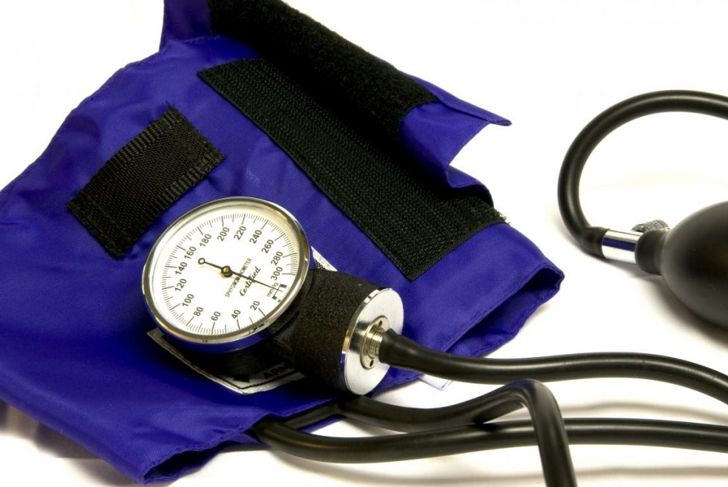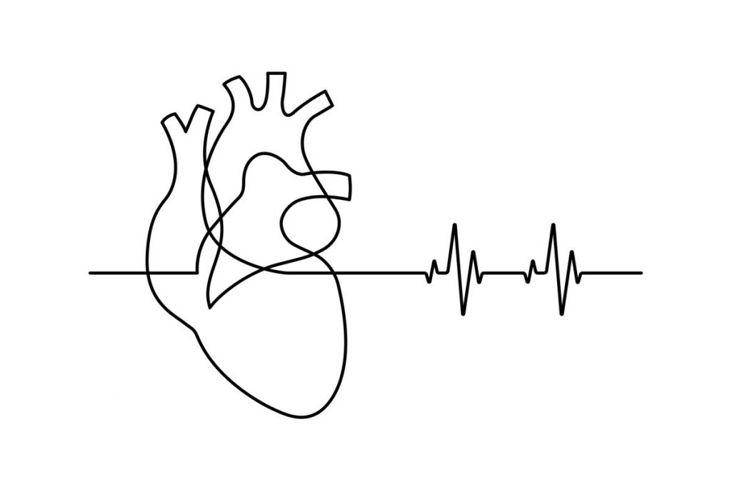Aortic valve insufficiency, also called aortic valve regurgitation, occurs when the aortic valve is damaged or weakened, thus enabling blood to leak back into the left ventricle of the heart from the aorta. Though the left ventricle will temporarily become stronger due to the extra effort needed to pump the blood back into the aorta, the exertion will eventually weaken the ventricle, which can compromise the heart and lead to further complications.
How the Heart Works
The heart has four chambers that circulate blood through the body, delivering oxygen and nutrients. The right chambers — the right atrium and right ventricle — take deoxygenated blood in and pump it to the lungs. The blood returns from the lungs full of oxygen, passing to the left atrium and left ventricle, where it is pumped back out to the rest of the body. Valves exist between each chamber of the heart to keep the blood flowing in the correct direction, thereby making the heart’s pumping more powerful and efficient.
The Aortic Valve
The aortic valve is one of four valves in the heart, each of which can become damaged and interrupt the well-oiled machine that is the heart. The aortic valve connects the left ventricle, the last stop for blood moving through the heart, to the aorta, the main artery of the body’s circulatory system. The valve itself has three cusps or leaflets, and these must open and close together for the valve to create a proper seal while pumping the blood. If these cusps are fused or unable to work in harmony, blood can flow from aorta back into the left ventricle.
Cause: Heart conditions
Several heart-related conditions can cause aortic valve insufficiency. Congenital valve problems such as a bicuspid aortic valve (BAV) can cause aortic regurgitation because the affected valve has only two cusps instead of three. Some diseases, such as endocarditis, specifically infect and weaken the heart valves. Other heart problems can be a result of aging, including high blood pressure and aortic dissection (a small tear in the wall of the aorta), and trauma to the chest at any age can also lead to valve regurgitation.
Causes: Diseases and Disorders
Along with heart-specific conditions, other diseases and disorders can weaken or affect the aortic valve. These include ankylosing spondylitis, Reiter syndrome, Marfan syndrome, syphilis, and systemic lupus erythematosus. Rheumatic fever used to be the main cause of aortic valve insufficiency, but it is less common today to the success of antibiotics in treating strep infections.
Symptoms
A damaged aortic valve means that though the heart pumps overtime to keep the blood flowing properly, it is unable to pump enough blood to keep the body sufficiently oxygenated. This can result in symptoms such as fatigue and shortness of breath with activity or even when sitting or lying down. Other symptoms include an abnormal pulse that seems to race, flutter, or pound, fainting, swelling in the feet, legs or abdomen, and general weakness. Chest pain (angina) is a rare but more serious symptom. People with aortic regurgitation may not have symptoms until years after the condition develops.
Diagnosis
When diagnosing aortic valve insufficiency, the doctor may listen for a heart murmur or a forceful beat of the heart in the person’s chest. He or she will also measure the patient’s blood pressure since low diastolic blood pressure is often a sign of aortic valve insufficiency. Chest x-rays can identify any signs of fluid in the lungs and check for swelling in the left lower heart chamber near the aortic valve. Other tests include aortic angiography, echocardiogram (an ultrasound of the heart), an MRI of the heart, a left heart catheterization, and a transesophageal echocardiogram (TEE).
Risk factors and complications
People between the ages of 30 and 60 are more at risk. Those with a history of heart disease, infections, or other heart valve conditions are as well. High blood pressure raises one’s risk significantly; managing this condition is an effective way to minimize the chances of developing aortic valve insufficiency. Complications of the condition include abnormal heart rhythms, infection in the heart and valves, heart failure, and death.
Treatment for mild and moderate cases
For more mild conditions, the doctor will regularly monitor the heart and blood pressure. Procedures include occasional echocardiograms and recommend improved eating and exercise habits. In some cases, doctors may suggest individuals reduce physical activity. This can lighten the pressure on the heart and the aortic valve. For more moderate cases, doctors may prescribe ACE-inhibitor drugs and diuretics (water pills) to ease symptoms of heart failure. These treatments are not meant to fix the valve permanently. Instead, they control the condition and prevent it from becoming worse.
Treatment: Surgery
For advanced aortic valve insufficiency, surgery may be necessary. This decision depends on an individual’s symptoms and health. There are two surgical options: repairing the damaged aortic valve and replacing it completely. Surgeons can replace the valve with a mechanical valve or one from a pig, cow, or human. This open-heart procedure involves a long recovery period. Sometimes, it is possible to have minimally invasive “keyhole” surgery to reduce complications and recovery time.
Long-Term Treatment and Outlook
Mild aortic valve insufficiency can be treated and monitored without surgery. However, more severe cases will likely do poorly without surgical treatment, which can relieve the symptoms of aortic regurgitation and result in complete recovery, barring other complications. Once someone is diagnosed and treated for an aortic valve insufficiency, he or she should have regular checkups. The medical practitioner can monitor progress. He or she can also recommend personal steps to ensure the condition remains stable.

 Home
Home Health
Health Diet & Nutrition
Diet & Nutrition Living Well
Living Well More
More




















